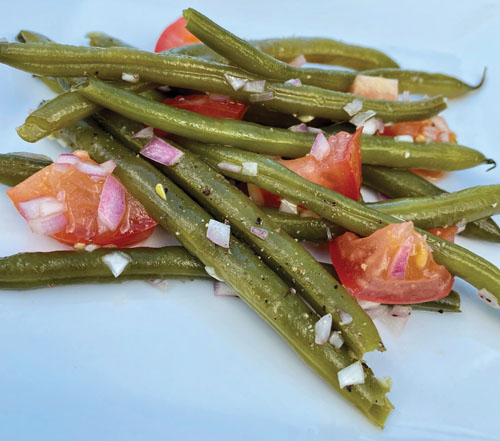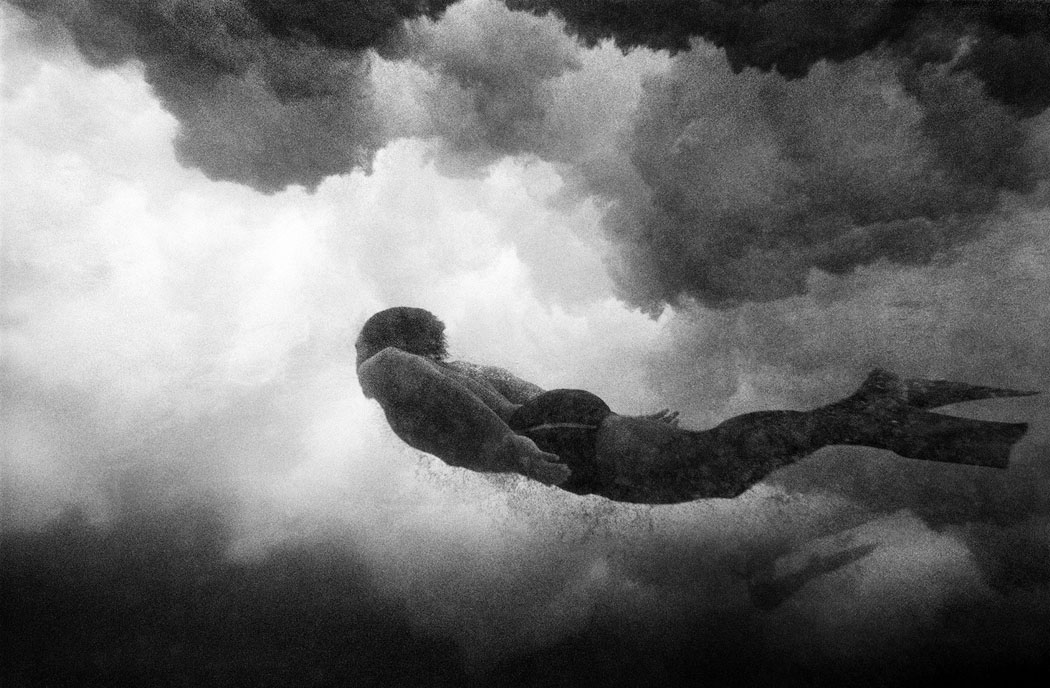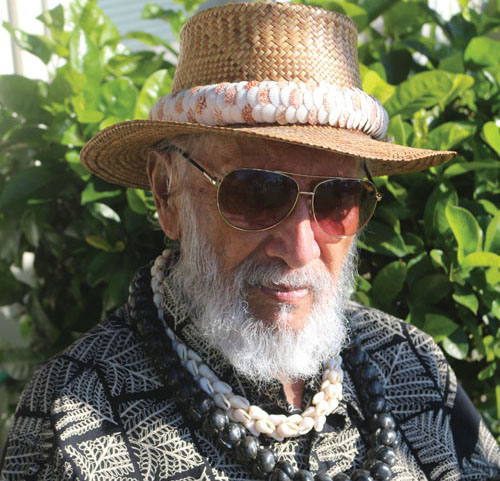
Corals: Living Rainforests of the Sea

By Stefan Verbano
Hanau ka ‘Uku-ko‘ako‘a, hanau kana, he ‘Ako‘ako‘a, puka
“Born was the coral polyp, born was the coral, came forth”
—Kumulipo, Hawaiian Chant of Creation, line 15
Surrounding the islands, inhabiting a narrow column of warm water—with destructive pounding surf above and inhospitable cold darkness below—the reef-building corals cling to life. Marine scientists call them the “rainforests of the sea,” named so for the elaborate technicolor ocean floor landscapes they gradually create. These landscapes provide food and habitat for countless underwater species: forage for feeding fish, scuttling grounds for crabs, hiding places for eels, firm footing for mollusks. Some researchers suggest 25 percent of all organisms in the world’s oceans directly depend on reef ecosystems for survival.
Darting tropical fish color these Hawaiian underwater rainforests most strikingly, but on second glance the corals themselves are adorned in brilliant greens, golds, browns, and silvers, too, colored by microscopic algae living within their delicate, porous superstructures—structures that grow to resemble everything from grains of rice to antlers, heads of cauliflower to patterns of lace, cups, fingers, brains, and mushrooms. The formations are built by tiny jellyfish-like organisms called “polyps,” which spend their days within hollow cavities inside the coral matrix, extending tentacles out at night to capture plankton floating by in the water.
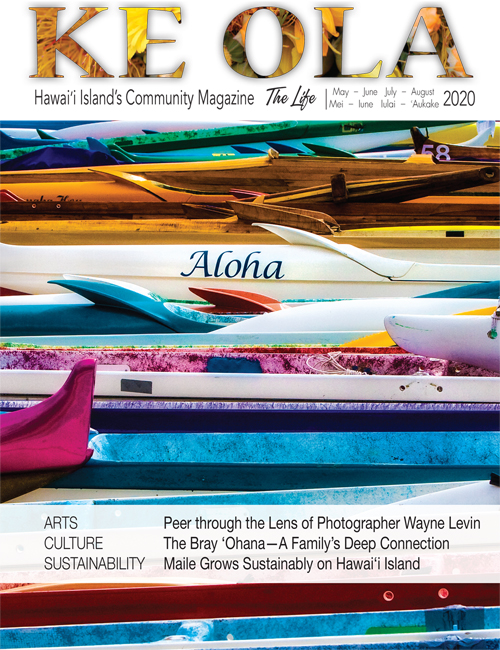
This method of feeding supplies the polyps with only about 20 percent of their necessary nutrients; the other 80 percent comes from a symbiotic relationship they have forged with the colorful algae growing on the coral’s surface. Coral provides a safe home for algae, while algae photosynthesizes the sunlight in the shallows, creating oxygen and glucose to feed the polyps. Reef-building corals are only found in shallower waters for this reason; without enough sunlight, the algae can’t survive and complete the symbiotic cycle.
The byproducts of this arrangement—excreted as waste by the polyp—are thin layers of calcium carbonate. These are their skeletons, which build upon one another over numerous generations to create the stone-like consistency of coral. Over the course of decades, even centuries, of building their colorful underwater swaths, coral reefs become the essential link in a food chain which supports all life in the shallows and beyond, including here in Hawai‘i, where humans living in coastal communities have depended on sea life as an indispensable source of protein since the time of the first Polynesian settlers.
Ancient Hawaiians recognized the important role corals played in sustaining lifeforms living both in and out of the water. The Kumulipo, their more than 2000-line creation chant recited from memory, names the ko‘a, or coral polyp, as the first organism created after the Earth was brought out of cosmic darkness, followed by urchins, sea stars, sea cucumbers, and then every other strata of ocean life in ever-increasing complexity. In their maritime culture, the ancients went to great lengths to be stewards of the reefs, knowing the many types of fish that had found such a fond place in their imu (Hawaiian underground earthen ovens) depended on corals as building blocks of life in the underwater world. Modern ocean science has come to the same conclusion: that the health of the corals, and thus the health of the reefs, dictate the health of every species which relies on them. This fact has researchers treating corals as a type of “canary in the coal mine” for coastal sea life ecosystems, whose early peril warns of worse things to come.
The Beginning of Change
Not long ago, the island chainʻs reefs, especially those surrounding Hawai‘i Island, were doing relatively well. But a boom in coastal development along shorelines, in tandem with slowly but steadily increasing global ocean surface temperatures caused by greenhouse gas emissions, wastewater pollution, toxic sunscreen use, boat anchoring and groundings, careless ocean-goers, and overfishing, are all threatening the viability of the state’s coral populations.
Fall 2014 marked the beginning of a three-year period of significantly heightened ocean surface temperatures in the state, setting off a process known to scientists as “coral bleaching,” where warmer water turns the symbiotic relationship between the two organisms toxic, causing the coral polyps to expel the colorful algae, rendering their vacated stony structures ghostly white. At this stage, the coral is sick but not dead, and with a prompt return to normal water temperature it can recover and once again accommodate algae, attract fish, grow, and multiply. But should a fall heat wave be drawn out, with weeks turning into months, the algae won’t return to bleached coral and the polyps will die of starvation.
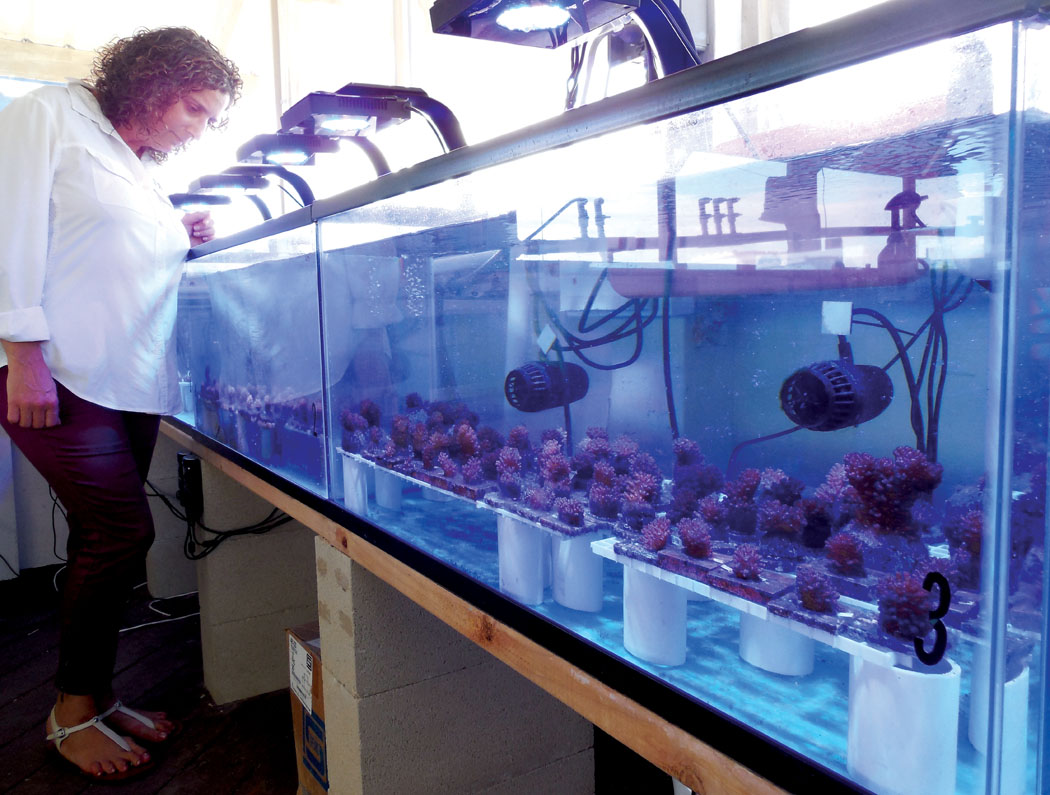
Roughly 60 percent of Hawai‘iʻs corals were stricken during this massive bleaching episode—30 percent eventually died. The archipelago is home to 80 percent of coral reef populations in the US, split between the inhabited main islands and the Northwestern Hawaiian Islands, including Papahānaumokuākea Marine National Monument. The National Oceanic and Atmospheric Administration (NOAA) predicted a second massive bleaching event would occur last fall, in 2019, but it was fortunately less severe than first feared. Still, on Hawai‘i Island, according to the Hawai‘i Department of Land and Natural Resources (DLNR), the majority of reef sites surveyed by their Division of Aquatic Resources (DAR) team that season showed some level of bleaching, with the most severely affected areas located along the Kona coast, where 40 percent or more of live coral colonies at many sites were found bleached. The DAR team observed rice and cauliflower coral species to be hardest hit.
Coral bleaching is a global problem, with seasonal tropical ocean heat waves compromising reef health and thus the biodiversity, food security, and economic stability of coastal communities worldwide. It has cropped up as one of the many consequences of human-caused climate change, where increased carbon emissions into the atmosphere create a greenhouse effect, trapping solar energy and excessively warming the planet’s surface, throwing off weather patterns, causing sea levels to rise, and creating more violent and unpredictable storms. Reefs serve as breakwaters for big ocean swells, tempering the power of waves before they reach shore, and help slow the speed of moving water during tidal changes.
Looking to the Future
Dr. Susanne Otero walks up the steps and through the swinging door of the screened-in hale (house) behind her office to check on the coral. This is Legacy Reef Foundationʻs Coral Propagation Lab, and Susanne is the organizationʻs co-founder and project director, assisting the foundation in distributing low-tech, self-contained coral propagation systems to coastal communities on multiple continents experiencing the ill effects of reef loss.
Inside the 40-gallon aquariums lining the labʻs wall, tiny pieces of cauliflower and rice coral cling to neatly arranged tile and concrete blocks. The miniature specimens are created through a process called “coral micro-fragmentation,” where larger salvaged corals are broken into smaller, uniform pieces and adhered to useful substrates to grow in a type of nursery. These coral fragments will grow many times faster than if still in one piece, gradually filling in voids and fusing into one continuous organism after the “cuttings” recognize they all share the same DNA. Micro-fragmentation as a propagation technique has the potential, Susanne says, to create a large volume of coral in a relatively short amount of time.
“You take a little piece from the ocean and then you bring it back in two years,” Susanne says, “and by then it will be the size it would have been in 20 years normally, ready to reproduce. That is the hope.”
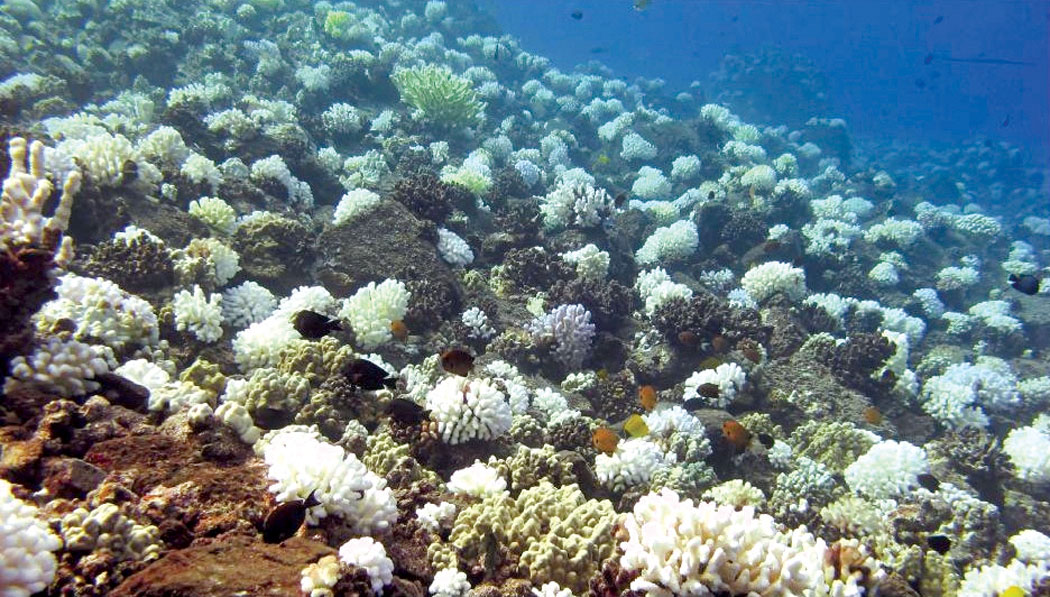
The coral lab hosts visitors from many walks of life: students on field trips, casual tourists on vacation, ocean lovers, divers, and snorkelers of every stripe—even business groups. In most cases, Susanne says, visitors arrive at the lab, located inside the Hawai‘i Ocean Science and Technology Park along Hawai‘i Island’s Kona coast, not knowing much about coral, and leave with a newfound interest and appreciation for the animal that looks like a rock.
“They love the idea of how they reproduce—just cut off a little piece!” the director says. “They recognize that thatʻs one of the things that represents part of the solution—buying time for nature to replenish itself. They are always surprised that they might be stepping on something thatʻs alive.”
Susanne views the issue of reef loss through the lens of her public health background. Without viable reefs, she says, the countless communities of people who rely on them will become as vulnerable and unhealthy as the coral itself.
“Theyʻre going to have trouble feeding themselves,” she says. “Weʻre going to lose more fishermen, and theyʻre going to start migrating. Whenever people are taking off from their culture and their homes and their support systems, it really is a recipe for disaster. So, I look at it as a public health problem.”
In May 2019, Heather Howard founded the Coral Reef Education Institute in Kona after selling her fancy new truck, buying a cheap clunker, and using what was left for seed money to cover the instituteʻs earliest expenses: computer, website, business cards, nonprofit status paperwork.
“We basically started by just rubbing two pennies together,” Heather says. “Everything has been out of our own pockets. We hope that will change of course…the further down the road we get, the more it evolves.”
Currently, the institute is engaged in training divers in identifying and counting corals, mentoring high school students interested in ocean conservation, raising money for scholarships, and sending teams to popular West Hawai‘i beaches to help swimmers exchange toxic sunscreen for reef-safe varieties. Heather dreams of building the Pacific Ocean Science Center, a world-class coral education, research, and conservation facility along the Kona coast where scientists, students, and the general public can work together to mitigate human impacts on the reefs.
“The more we learn about what’s going on with the corals,” Heather says, “the more we learn that the problems corals face are human-based. We have to change human behavior…because if we continue on the path we’re on, even planting corals might not be that successful.” ❖
For more information: OneCoralReef.org, LegacyReefFoundation.org
